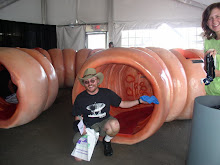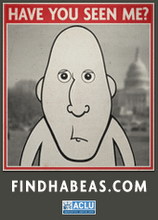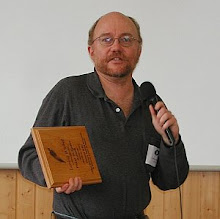Was the punk tsunami a new wave, a no-wave, or a rogue wave? - 1977-79
Followers of pop culture who have never ridden the crest of a strong
wave often wonder what it feels like, if there are precursors to observe or recipes
to follow to bring a wave to fruition. The answer to the latter is a definite
no, because the answer to the former involves the chaotic “butterfly effect,”
where tiny initial conditions lead to huge results. Sometimes, waves involve only
a political or social dimension. The Gaza campus encampments of 2024, the Occupy
wave of 2011 and the Black Lives Matter wave of 2020 might be seen as
near-tsunamis, while waves like the post-Seattle-battle “follow the World Trade
Organization” movement of 1999-2000 were smaller but discernible.
When political and social
waves converge with cultural and music trends, a rogue wave of unprecedented
size is created, usually from random inputs that combine at just the right time
for just the right effects. The youth culture wave stretching roughly from
Beatlemania to Kent State was arguably the biggest (some might extend its
beginning to mid-1950s rock and roll, and there are good arguments on either
side for its inclusion). Because I was so young when that wave broke, I thought
of it as the norm in society, and only realized later how tedious the eras
between waves could be.
Punk culture never had the
broad base of acceptance to match the events of a decade earlier. However, it
arrived at the same time as a political reawakening centered on environmental,
anti-nuclear, and anti-apartheid activities, with opposition to U.S.
intervention in Central America added to the mix after 1978. The political
elements of the wave never matched opposition to the Vietnam War in breadth
(though the 2 million marching for nuclear disarmament in June 1982 hit records
never before seen in the late 1960s). But when the smaller wave of punk crested
sinusoidally with the smaller wave of political reawakening, a rogue wave of
not insignificant size was created.
In late 1976, when Patti
Smith released her misunderstood and oft-derided sophomore album Radio Ethiopia, I fell in love with its near-delirious mysticism,
and noticed a distinct throbbing in my own brain, akin to the old farmer whose
bunions would swell when a storm was approaching. I made a conscious but
inexplicable decision to add a poetry and small-press specialty class to my
fall class schedule, and began volunteer work for a quarterly literary magazine
published out of the offices of the Lansing Star, called Invitation. I had already been writing for the Lansing Star on the local activities of a private
police-intelligence club called the Law Enforcement Intelligence Unit, an
organization with ties to the 1974 death of Oklahoma plutonium worker Karen
Silkwood. The poem I submitted to Invitation was one on
Silkwood, and I suddenly felt resonances everywhere. Al Drake, the poet who ran
the DIY poetry publishing class, encouraged such intuitive resonances.
The new year announced itself
with critical album releases like Television’s Marquee Moon, Bowie’s Low, and for the more mainstream listeners, Fleetwood Mac’s Rumours. With the exception of Mac, where the ubiquity of
Stevie’s voice peaked right around the new year, none of this excitement
manifested itself in Top 40 radio, which was in the middle of the Debby Boone-Andy
Gibb-Leif Garrett period. But since our own weekend parties centered on a
turntable, radio listening could not be farther from my mind. Winter nights
carried a soundtrack of Patti Smith’s recorded mumbling about “Brancusi….blood
and space” (while the real Patti was in a neck brace after a fall from a Tampa
stage), and Tom Verlaine shouting “Prove it! Just the facts.” A lot of Tom
Waits seemed to end up in the mix, as I was gravitating more to the power of
the spoken word and performance poetry.
The atmosphere on campus synched
well with music coming in from Europe and from larger U.S. cities. WhereHouse
Records opened during the bicentennial year as a mecca for all new releases,
and Flat Black & Circular opened in 1977 as a repository for used records
and eclectic releases from small labels (the latter celebrated its 47th
birthday in 2024). After I left town, East Lansing was graced with many chains
such as Tower Records and CD Warehouse, though none sported the longevity of
the dependable FB&C.
It’s easy to forget how
strange the first few months of the Carter administration seemed, what with the
Hanafi Muslim siege in D.C., multiple back-to-back plane crashes, a series of
terror actions by the Baader-Meinhof gang. Events later in the Carter
administration could be placed into a bucket of Islamic revolution, the
Afghanistan crisis, etc., but when random events do not fit a predetermined
template, it’s remarkable how quickly they are forgotten. I was integrating a
lot of this imagery into the poetry chapbook that would become my semester
project for Al Drake’s DIY class. The experience spurred me into making a call
for submissions for a literary magazine, maybe a bit presumptuous of me, though
the response was surprising.
The promotional flier that mentioned
“deliberate unmarketability” reflected my growing disillusion with the
communication department at Michigan State University. I was looking for the
equivalent of an MIT Media Lab that did not yet exist. MSU was convinced its communication
school should fall fully under the Business Department. By the end of the
spring semester, I had made up my mind to transfer elsewhere, but where?
At some point early in the
summer of 1977, I met several residents and hangers-on of the poetry house on
campus, Surf City Convent. I was overjoyed to find that Lee, Sam, Rosa, and
Marilyn had no pretensions, and were rather mischievous most of the time. Going
drinking and carousing with the convent in that summer involved trips to dive
bars to see unrehearsed local punk bands like Tool Box, mostly doing covers of
Sex Pistols and Dead Boys. In the course of the summer, we picked up new
releases from The Clash, The Vibrators, Elvis Costello, The Saints, and Richard
Hell & the Voidoids. It was a distinct musical and cultural movement in its
early stages. I remember a day in early September where we had a record swap of
sorts at Surf City – Sam showed off the first single from Talking Heads, “Love
> Building On Fire,” and I brought in fresh LPs from Iggy Pop and Gil
Scott-Heron & Brian Jackson.
By the time the literary
magazine was published and we hosted an open mic at Jocundry’s Bookstore, I had
already dropped out of MSU for fall semester. I lived temporarily in an old
tumble-down farmhouse on Grand River Ave. near the airport, soon to be
condemned for an interstate freeway expansion. We’d host parties with a
background of Costello and Robert Gordon, while I asked around about cars
heading west. Rosa had written three Arizona poems, and I decided that would be
my next destination. (After I left Michigan, some members of Surf City Convent
joined local art-rock bands like Trainables and Betty & Dean’s Living Room,
while others formed the core of what would become Sisters of Perpetual
Indulgence. Lee became a nationally-renowned poet and literary critic, leaving
us all in awe.)
I made
a stopover in Oklahoma City for a couple weeks at year’s end to help out on
pre-trial discovery for the Karen Silkwood civil trial, then came barreling
into a north Phoenix neighborhood, Sunnyslope, in early February 1978. I lived
among some of the Valley of the Sun’s most down-and-out for a couple months,
and made friends with Phil, a lanky man with beret and goatee, who’d repeat
like a mantra, “Ain’t nothin’ for the head like the old Grateful Dead.” I moved
to Tempe by March, and lived for a brief time with a few Star Wars nerds
excited about the arrival of the century’s greatest space opera franchise.
The chance discovery of a call
for roommates in mid-spring steered me to two soon-to-be-lifelong friends,
Chris and Kevin, who matched my musical interests and political aspirations to
an uncanny degree. Within weeks, we had launched an Arizona branch of
Mobilization for Survival, holding political encounter sessions on almost a
nightly basis. Punk albums were rolling out weekly, and the 45 rpm bins at both
Tower Records of Tempe and the small, scruffy World Records down the street
kept me fed with odd new singles. World Records’ proprietor, Geno, turned me on
to the Cleveland band Pere Ubu, which defined for me where art-rock really ought to go, even if it never turned into the most
sought-after cult music in the country.
The greater Phoenix area sported
a punk scene nearly as vibrant as that of L.A. The larger regional bars
featured touring appearances by Weirdos, Dils, Talking Heads, while a Tempe
theater would regularly host the pride of the local community, The Consumers. I
got introduced to various scenemakers like Bill Drummond, a visual artist who
always seemed to wear a haz-mat suit, and Frank Discussion, founder of local
band The Feederz, who gained some broader notoriety in the southern California
scene. Still, the regional scene seemed more tuned to elite insiders than a
massive Arizona public at large.
My own work and study agenda
was odd and invigorating. I worked for the ASU Publications Department,
designing book covers and choosing fonts in a pre-desktop-publishing era,
trying my hand at such publications as the first English translations of the
poems of Nicaraguan priest Ernesto Cardenal. At night, I’d take evening classes
on international security, including military-policy courses from the Cold War
warhorse Donald Dalgliesh. I remember a small chain-smoking Romanian woman who
taught Eastern European politics. As a final project in her class, I put
together a history of the repression of the Prague band Plastic People of the
Universe, who later gained international fame as close allies of future
president Vaclav Havel. Deciphering the Plastic People made me ponder what was
underground, what was for the masses, and how to tell the difference.
Thurston Moore of Sonic Youth
once made an observation on jazz which he predicted would fit many musical
trends – something arrives as the most powerful genre of youth, then migrates
to an elitist genre favored by serious listeners, and finally fades into
near-obscurity, except for occasional periods of revivalism. Various strands of
pop and rock music were caught between mass popularity and elitism during 1978.
A few forms of progressive rock joined punk in the elitist club, but struggled
to find the popularity they deserved – bands like Chrome and Gong would drift
into and out of the punk milieu, while prog-rock fans tried to decide if they
wanted to be associated with these boisterous whippersnappers. (It is an odd
truism that those who fit nicely within the MOR/AOR camp tended to
“misremember” in later decades how involved they were with elitist bands – “I
was at those earliest Blondie and Talking Heads concerts.” “No you weren’t. I
was there. You were at the disco.” This misremembering repeated itself with
every succeeding decade.)
In such an environment was
the artificial bifurcation between new-wave and no-wave born. Major labels
wanted to remove what they saw as the seamier aspects of punk, and began
promoting high-energy but cleaner bands along the lines of The Cars, The
Shirts, The Romantics, and Tommy Tutone. Make no mistake, many of the new wave
artists were more than worth a spin. Partly in response, New York and San
Francisco art-punks deliberately turned up the dissonance and created no-wave,
favored by DNA, Mars, Teenage Jesus & The Jerks, James Chance, Pink
Section, Flipper, and many others. Brian Eno produced the multi-artist album No New York which defined the no-wave movement.
Meanwhile, a few AOR bands like
Styx and Queen wedged themselves into a tightly-controlled Top 40 culture dominated
by disco and forgettable ballad music. It was still a year before the Sony
Walkman hit the streets, but early trend-setters already were taking their
cassettes to the gym using makeshift stereo systems, in which music playlists
were designed as background to serve exercise routines. The 1978-79 “music as
Pilates” movement hinted of the future singles lists of the 1980s, where
Madonna and Paula Abdul led a coterie of pop stars for whom dance and movement
played a far more important role than arrangements or lyricism. Such shifts in
focus remain central today to genres such as K-pop. I had moments of self-doubt
in 1978 where I wondered if I was giving MOR music a short shrift, but checking
out lists of hits 45 years after the fact made me realize that, except for a
few great novelties like Warren Zevon’s “Werewolves of London” and Randy
Newman’s “Short People,” the Top 40 lists of the time were as vacuous as I
remembered. Sometimes, smooth hits with saxophone like Gerry Rafferty’s “Baker
Street” or Steely Dan’s latter 1970s hits proved of momentary interest, but all
too often, songs like Carly Simon’s “You Belong to Me” previewed the
synthesizer swoosh that would be all-too prevalent in pop hits of the early
1980s.
As anti-nuclear actions
started escalating in the second half of 1978, I pondered carefully the changing
role of politics in pop. The Laurel Canyon and Americana artists like Jackson
Browne and Bonnie Raitt tended to dominate the series of “No Nukes” concerts. A
handful of the more serious British bands like The Clash, Crass, and Gang of
Four applied class analysis and Situationism to their screeds, and helped to
inspire later U.S. bands like Dead Kennedys. Yet deep social critique requires
a long-haul vision, which was not forthcoming from the vanguard. The Clash hit its high points with Give ‘Em Enough Rope and London Calling. Despite
its title, the band’s three-LP Sandinista tended to
dub excess, and by the era of Cut the Crap, The
Clash had become a parody of itself. Even the on-point Gang of Four, which wore
its Dadaism on its sleeve in 1979, moved to New Order-style dance numbers by
the post-Falklands Thatcher era. Crass may have stayed honest, but no one paid
the band any attention. That left only The Pop Group, Alternative TV, and Tom
Robinson Band to define British resistance politics.
In the U.S., Jello Biafra’s
rhetoric with Dead Kennedys helped to spur the hardcore punk movement of the
early 1980s, but by Reagan’s second year in office, most hardcore bands were
relying on trite stereotypes and name-calling for their political activism. In
short, rebel politics in pop culture played a negligible role from the late
1970s through the mid-1980s.
Dozens of genuinely fresh and
exciting punk and art-punk albums were released in 1979, via a mix of genuinely
independent labels, major labels, and faux independents backed by the big shots.
Major labels tried to steer and co-opt movements through new wave. They pointed
out that the existence of songs like Blondie’s “Heart of Glass” and Talking
Heads’ “Take Me to the River” in Top 40 charts proved the adaptability of hit
radio. Of course, the music that made it that far usually had moved into
“smooth” territory that occasionally augured the mainstream turn of the band.
But not always. Talking Heads could win mass appeal while remaining true to its
emerging dance styles, and Patti Smith could win hearts and minds with “Because
the Night” while changing very little of her outsider style.
Nevertheless, the last half
of the last year of the 1970s was a time that hinted of as much or more
constriction of pop music as it did for emerging styles. The rise of no-wave in
New York, and the popularity of Slits and Siouxsie and the Banshees in England,
proved a remaining flexibility in playlists, while Sugarhill Gang’s “Rapper’s
Delight” gave a preview of what was to come in hip-hop disciplines.
However, the looseness of the
Carter era was tightening quickly. The Iran hostage crisis in November,
followed in rapid succession by the seizure of the Kaaba in Saudi Arabia and
the Soviet invasion of Afghanistan by year’s end, left a feeling that hard
lines in the Western world would become the norm. By early 1980, Carter himself
was leading the charge to reinstate the draft, and to task Zbigniew Brzezinski
with unleashing the CIA in Afghanistan. British rebels already felt the stern
hand of the Iron Lady changing everything in U.K. politics, and now U.S.
political rebels and pop innovators were getting a taste of how different the
1980s might soon seem, even as our own nation still was a year away from the
inauguration of Ronald Reagan.
In three weeks (June 7) - "Chapter 8, The Co-Opting of Culture" - Punk melts down in a cesspool of Reaganism and Thatcherism - and an excess of dancing.
Copyright 2024 Loring Wirbel

















No comments:
Post a Comment